 Seeds and Germination
Seeds and Germination
 Grow Setup
Grow Setup
 Seedling Stage
Seedling Stage
 Vegetative Growth
Vegetative Growth
 Pre-flowering
Pre-flowering
 Flowering
Flowering
 Ripening
Ripening
 Harvesting
Harvesting
 Drying
Drying
 Curing
Curing
 Troubleshooting
Troubleshooting
 Training Techniques
Training Techniques
Cannabis Training Techniques
 15 Minute Read
15 Minute Read
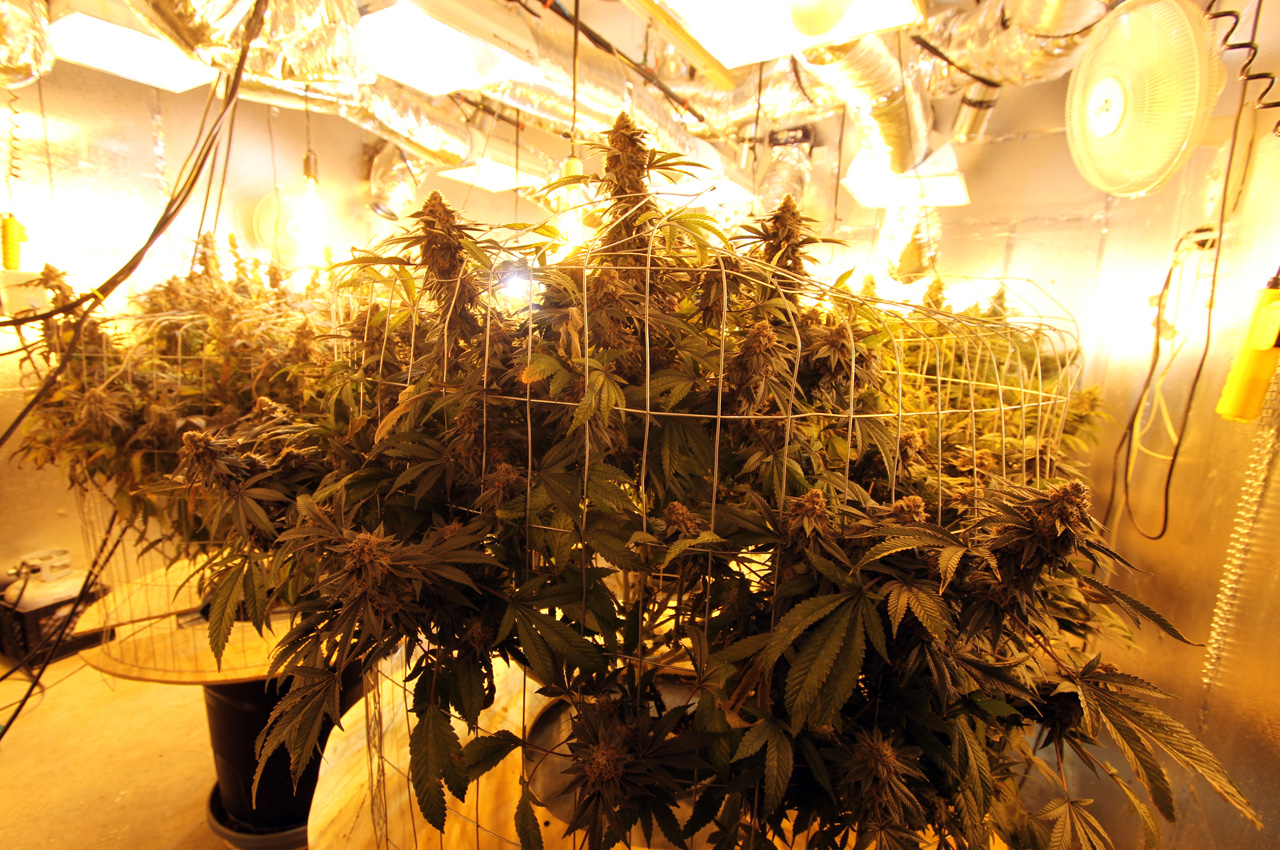
PUBLISHED: August 9, 2024
Introduction to Cannabis Plant Training
Welcome to Titan Seed Bank’s comprehensive guide on training cannabis plants. I’m Mike Titan, and over the years, I’ve experimented with various cannabis training techniques to maximize yields and improve the overall quality of my crops, especially focusing on low-stress training. Whether you’re a seasoned grower or just starting out, understanding how to train cannabis can significantly boost your cultivation success.
Cannabis plant training is an essential skill for any serious grower. By manipulating the plant’s growth patterns, we can increase light exposure, improve air circulation, and ultimately enhance both yield and potency. In this guide, we’ll explore a range of techniques, from low stress training (LST) to more advanced methods like screen of green (SCROG) and sea of green (SOG).
Some key topics we’ll cover include:
- The basics of cannabis training and why it’s crucial for optimal growth
- Low stress training techniques for beginners
- Advanced methods like SCROG, SOG, and supercropping
- How to implement fimming and manifolding for increased yields
- Tips for maximizing your sea of green yield per plant
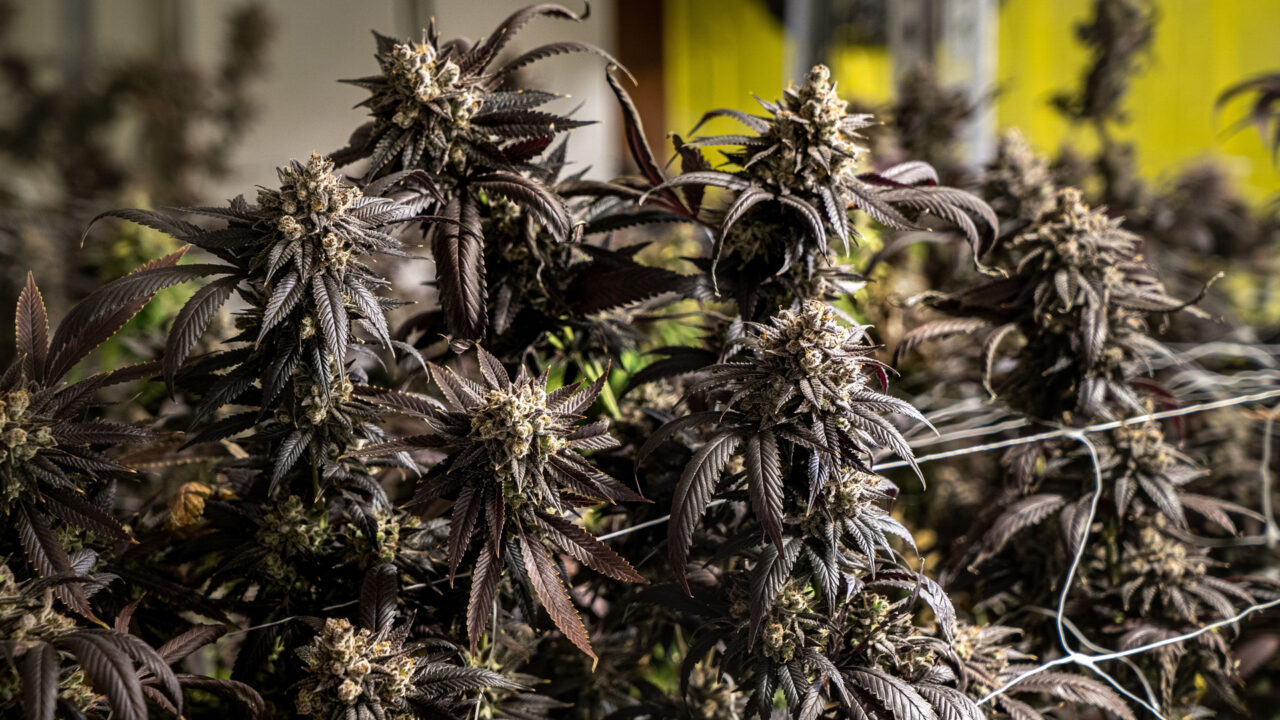
We’ll also address common questions like “When should I start low stress training?” and “How many nodes before topping?” Whether you’re looking to set up a small indoor grow or manage a larger operation, these cannabis training techniques can be adapted to suit your needs.
Whether you’re looking to set up a small indoor grow or manage a larger operation, these cannabis training techniques can be adapted to suit your needs. By the end of this guide, you’ll have the knowledge to train your cannabis plants like a pro, ensuring healthier plants and more bountiful harvests.
The Basics of Cannabis Training and Why It’s Crucial for Optimal Growth
Cannabis plant training is a game-changer for growers. It’s all about manipulating your plants to maximize yield and improve quality. But why is it so important? Let’s dive in.
What is Cannabis Training?
Cannabis training involves techniques to control plant shape and growth. It’s about creating an ideal structure for better light exposure and air circulation using LED grow lights and effective plant training techniques. Common methods include low stress training (LST), topping, fimming, and advanced techniques like SCROG and SOG.
Why Train Cannabis Plants?
- Increased Yield: Proper training can significantly boost your harvest. By exposing more bud sites to light, you’re encouraging denser, bigger buds.
- Better Light Penetration: A well-trained plant allows light to reach lower branches, promoting even growth.
- Improved Air Flow: Good air circulation reduces the risk of mold and pests, keeping your plants healthier.
- Space Efficiency: Training helps manage plant height, perfect for indoor growers with limited space.
- Stronger Plants: Many training techniques actually strengthen the plant’s structure, leading to healthier growth.
When to Start Training?
Start low stress training when your plant has 3-4 nodes. For high stress techniques like topping, wait until it has 5-6 nodes. Always ensure your plant is healthy before starting any training.
Basic Training Techniques:
- Low Stress Training (LST): Gently bend and tie down branches to create an even canopy.
- Topping: Cut the main stem to encourage lateral growth. This creates a bushier plant.
- Fimming: Similar to topping, but removes only part of the new growth, resulting in more top colas.
- Supercropping: Carefully bend stems to create knuckles, increasing nutrient flow.
Remember, every strain responds differently to training. Always monitor your plants closely and adjust your techniques as needed.
Training cannabis plants is an art and a science. With practice, you’ll develop a feel for what works best for your grow setup and chosen strains.
Low Stress Training Techniques for Beginners
If you’re new to cannabis growing techniques, low stress training (LST) is a great place to start for training your plants effectively. LST weed plants is all about gently manipulating your plants for better yields without causing significant stress. Let’s explore how to master this technique for total grow control.
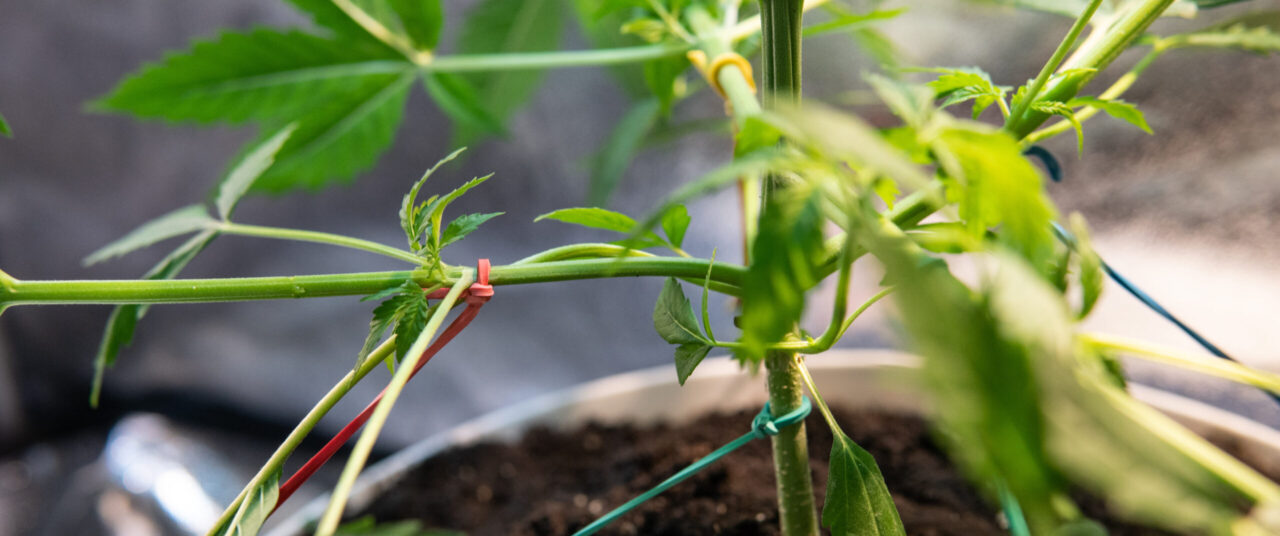
Low Stress Training Marijuana Plants
What is Low Stress Training?
LST cannabis involves bending and tying down branches to create an even canopy. This method encourages lateral growth and exposes more bud sites to light, helping you get bigger buds.
When to Start Low Stress Training
Start LST when your cannabis plant has 3-4 nodes. This is typically 2-3 weeks into the vegetative stage. Beginning early ensures your plant adapts well to the training.
Step-by-Step LST Guide:
- Gather materials: Soft plant ties or garden wire, and small stakes.
- Choose branches: Select the branches you want to train, typically starting with the main stem.
- Bend gently: Carefully bend the branch away from the center of the plant.
- Secure: Tie the bent branch to your pot or a stake in the soil.
- Repeat: Continue this process with other branches, creating a circular pattern.
- Adjust: As your plant grows, untie and retie branches to maintain an even canopy.
Low Stress Training vs. Other Techniques
While LST is great for beginners, other training methods like topping cannabis plants or the SCROG method can be combined with LST for even better results.
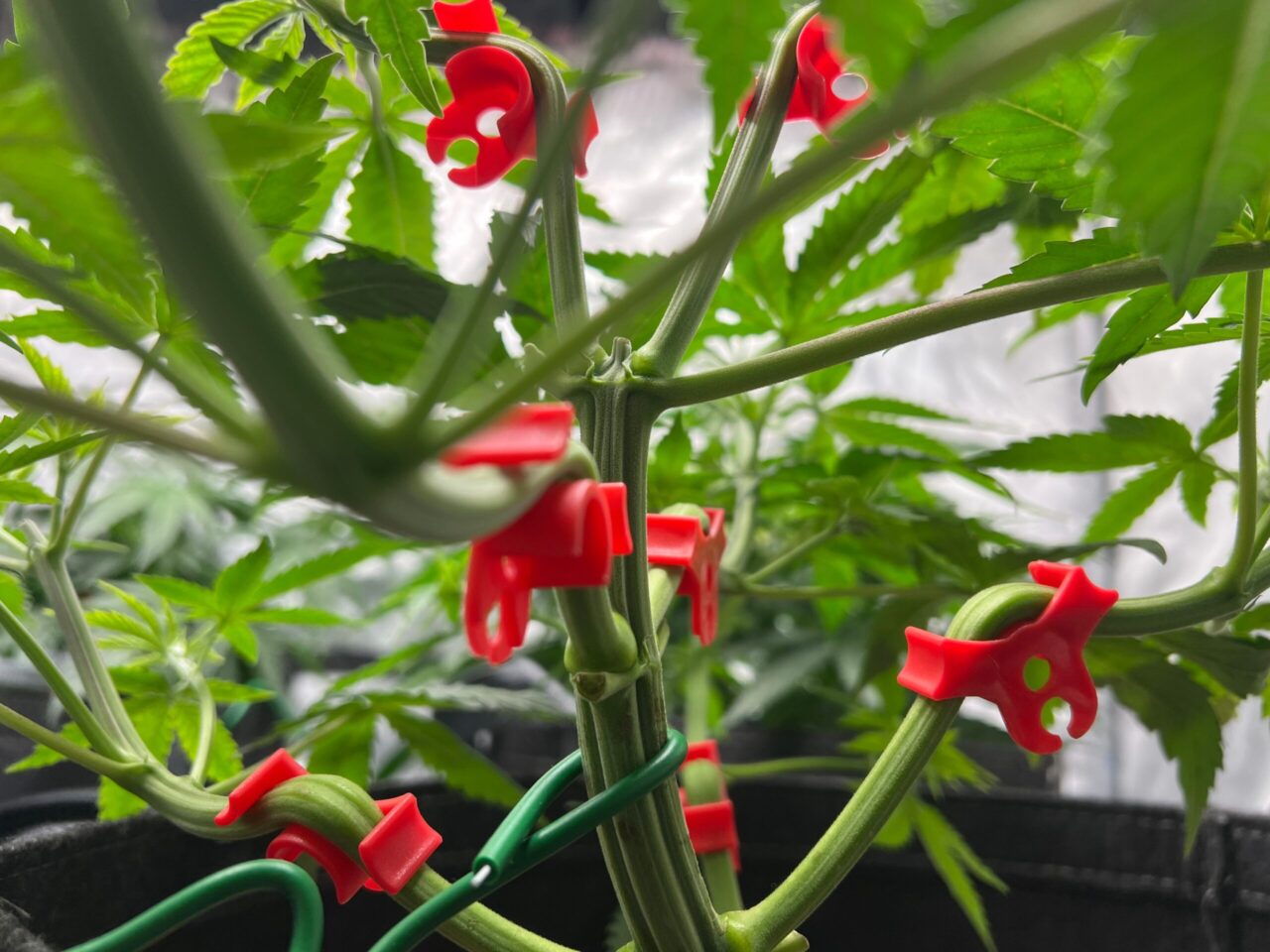
Topping weed plants involves cutting the main stem to promote bushier growth. This technique answers the question, “Why does pinching off the top of a plant make it bushier?” By removing the top, you encourage the plant to grow multiple main colas instead of one.
Benefits of LST:
- Increases yield
- Improves light penetration
- Enhances air circulation
- Keeps plants compact
- Reduces risk of plant stress
- Tips for Successful LST:
- Be gentle to avoid snapping stems
- Use a low stress training diagram for guidance
- Combine with other techniques like topping for best results
- Always monitor your plant’s health during training to ensure you do not stress the plant unnecessarily.
Remember, practice makes perfect when it comes to training a cannabis plant. With time, you’ll develop the skills to shape your plants for optimal growth and impressive harvests.
High Stress Training Techniques
High Stress Training (HST) involves techniques that temporarily damage the plant to promote stronger, bushier growth. While more intense than Low Stress Training (LST), HST can lead to significantly increased yields when done correctly.
Key HST Techniques:
Topping
- Cut the main stem above the 3rd-5th node
- Promotes two new main colas
- When to top: After 4-6 nodes have developed
Fimming
- Remove 75% of new growth at the top
- Can result in 4+ new tops
- Less recovery time than topping
Supercropping
- Gently crush the inner tissue of branches
- Bend branches at a 90-degree angle to improve the effectiveness of cannabis plant training techniques.
- Strengthens branches and increases nutrient flow
Mainlining
- Combination of topping and LST
- Creates symmetrical growth with multiple main colas
- Start early in the vegetative stage
Benefits of HST:
- Increases yield potential
- Improves light penetration
- Encourages bushier growth
- Strengthens overall plant structure
Risks and Considerations:
- Can stress plants if done incorrectly
- Requires recovery time
- Not recommended for autoflowering strains
Tips for Successful HST:
- Start with healthy, vigorous plants
- Use clean, sharp tools to minimize damage
- Allow adequate recovery time between techniques
- Monitor plants closely for signs of stress
- Combine with LST for optimal results
HST vs. LST:
- HST: More intense, longer recovery, potentially higher yields
- LST: Gentler, continuous training, lower risk
When to Apply HST:
- Early to mid-vegetative stage
- At least 2-3 weeks before flowering
Remember, High Stress Training requires practice and careful observation. Start with one or two plants to perfect your technique before applying it to your entire grow. With patience and skill, HST can dramatically increase your cannabis yields and improve overall plant health.
Advanced Methods: SCROG, SOG, and Supercropping
Ready to take your cannabis plant training to the next level? Let’s explore some advanced techniques that can significantly boost your yields and improve your grow efficiency.
Screen of Green (SCROG)
SCROG, or screen of green technique, involves using a screen or net to train your cannabis plants horizontally.
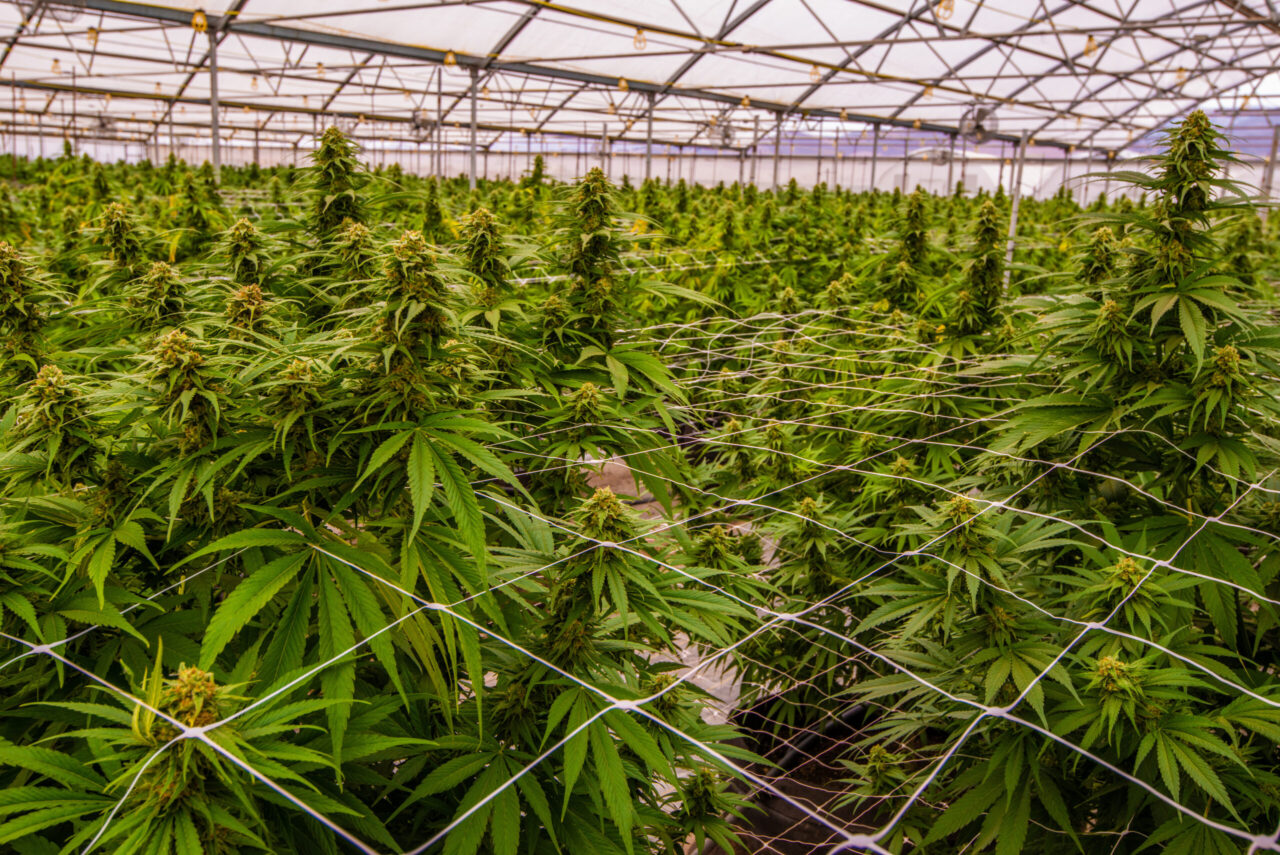
How to SCROG:
- Set up a screen about 15 inches above your plants to facilitate effective cannabis plant training techniques.
- Gently weave growing branches through the screen
- Continually tuck new growth under the screen
- Create an even canopy for optimal light distribution
Benefits of SCROG:
- Maximizes light exposure
- Increases yield per square foot
- Great for indoor grows with height restrictions
Sea of Green (SOG)
The sea of green method focuses on growing many small plants instead of a few large ones.
SOG Grow Basics:
- Plant many clones or seeds close together
- Force the flowering stage early (2-4 weeks of vegetative growth)
- Grow one main cola per plant
- Sea of Green Yield Per Plant: While individual plants yield less, the overall harvest is often larger due to the number of plants.
SCROG vs SOG:
- SCROG: Fewer plants, longer veg time, more training
- SOG: More plants, shorter veg time, less training
Supercropping
Supercropping is a high-stress technique that involves carefully damaging the plant to promote growth.
How to Supercrop:
- Choose a branch to supercrop
- Gently squeeze and bend the branch until it’s soft
- Bend the branch at a 90-degree angle
- Support the bent branch if necessary
Benefits of Supercropping:
- Increases yield
- Improves cannabinoid production
- Creates a more even canopy
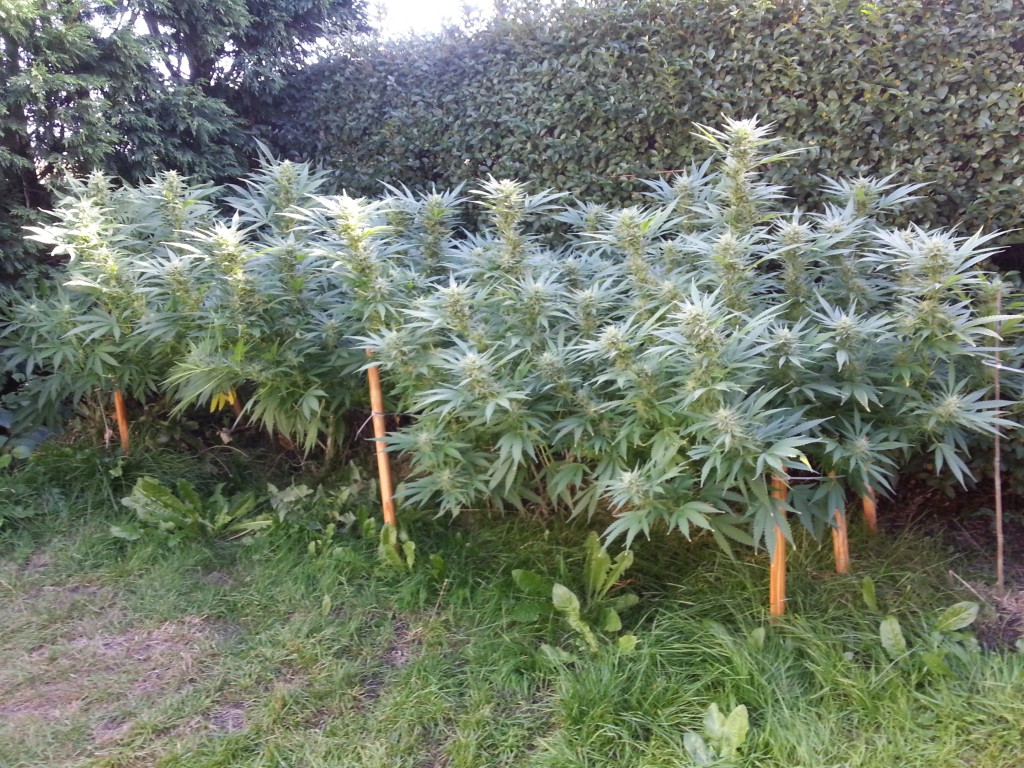
Additional Advanced Techniques
- Manifold Cannabis: A training technique that creates symmetrical growth and multiple main colas.
- Fimming: Similar to topping, but removes only part of the new growth. Fimming before and after photos show a dramatic increase in top colas.
Cannabis Topping: How to top marijuana plants:
- Wait until the plant has 4-6 nodes
- Cut the main stem above the 3rd or 4th node
- Allow the plant to recover and grow new main colas
How Many Nodes Before Topping?
Generally, wait for 4-6 nodes before topping marijuana plants.
Remember, these advanced cannabis plant training methods require practice and careful attention. Start with a few plants and perfect your technique before applying it to your entire grow.
How to Implement Fimming and Manifolding for Increased Yields
Ready to take your cannabis cultivation to the next level? Let’s dive into fimming and manifolding, two powerful techniques to boost your yields.
Fimming: The Art of Partial Topping
Fimming, or “FIM” (F**k I Missed), is a high-stress training technique that can dramatically increase your plant’s cola count.
How to FIM:
- Wait until your plant has 3-5 nodes
- Locate the newest growth at the top
- Using clean scissors, cut about 75% of the new growth
- Leave 25% of the new growth intact
- Fimming Before and After: A crucial step in several cannabis plant training techniques.
- Before: Single main cola
- After: Multiple new top colas (often 4 or more)
- Benefits of Fimming:
- Creates more top colas than topping
- Encourages bushier growth
- Minimal recovery time compared to topping
Manifolding: Symmetry for Maximum Yield
Manifolding, also known as mainlining cannabis, is a training technique that creates a symmetrical plant structure with multiple main colas.
How to Manifold Cannabis:
- Top your plant above the 3rd node when it has 5-6 nodes
- Remove all growth below the top two branches
- Allow these two branches to grow 3-4 nodes
- Top each of these branches
- Repeat the process until you have 8, 16, or 32 main colas
Benefits of Manifolding:
- Creates uniform bud development
- Improves airflow and light penetration, which is essential for effective plant training techniques.
- Potentially increases overall yield
Fimming vs Topping:
- Fimming: More colas, less recovery time
- Topping: Cleaner split, more predictable results
- Tips for Successful Fimming and Manifolding:
- Start with healthy, vigorous plants
- Use clean, sharp tools to minimize stress
- Allow adequate recovery time between training sessions
- Combine with low stress training (LST) for best results
When to Start:
- Fimming: When the plant has 3-5 nodes
- Manifolding: Begin topping when the plant has 5-6 nodes
Remember, both fimming and manifolding are advanced techniques. Start with a few plants to perfect your method before applying it to your entire grow. With practice, you’ll be on your way to achieving impressive, high-yielding cannabis plants!
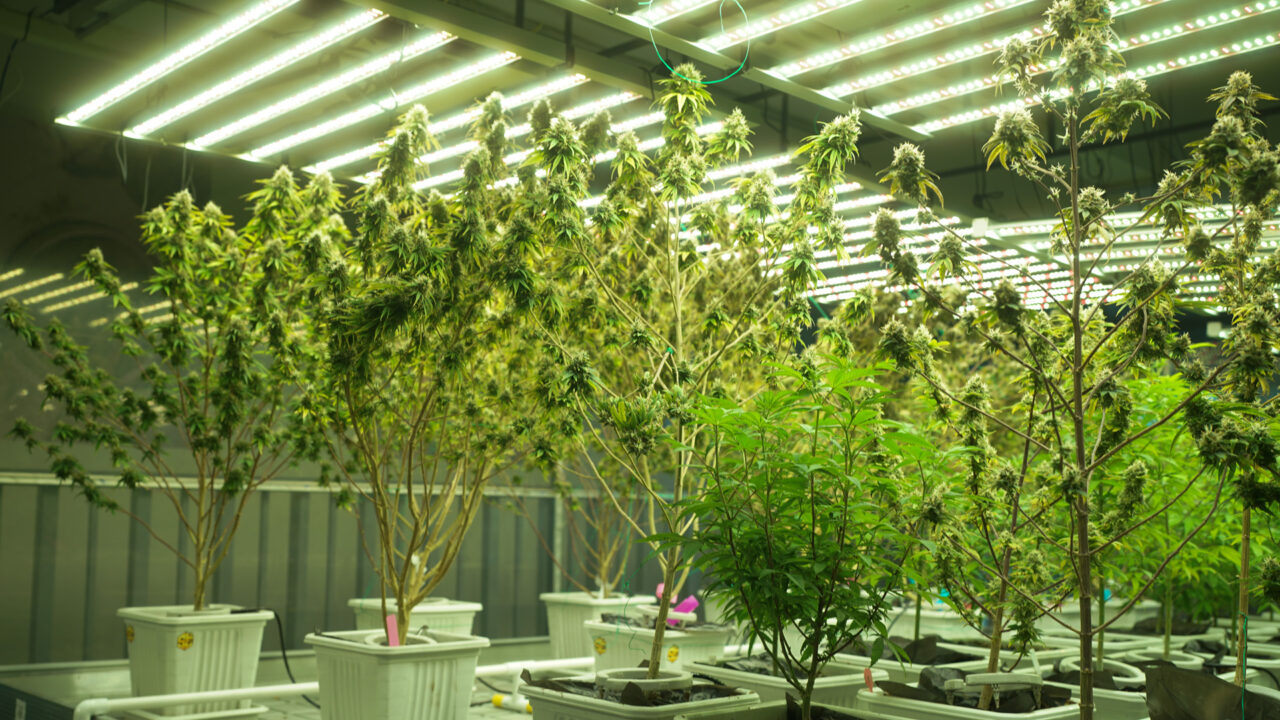
Tips for Maximizing Your Sea of Green Yield per Plant
The Sea of Green (SOG) method is all about efficiency and maximizing your grow space. Here’s how to get the most out of each plant in your SOG setup.
Understanding SOG
Sea of Green involves growing many small plants instead of a few large ones. The goal is to create a “sea” of uniform, single-cola plants.
- Key SOG Principles:
- High plant density
- Short vegetation period
- Focus on main cola development
- Maximizing SOG Yield
- Choose the Right Strains
- Opt for indica-dominant hybrids
- Look for strains known for single-cola growth
- Consider autoflowering varieties for faster cycles
- Optimize Vegetation Time
- Typically 1-2 weeks from rooted clone
- 2-3 weeks for seeds
- Transition to flower when plants are 6-8 inches tall
- Plant Density Matters
- Aim for 4-16 plants per square meter
- Adjust based on strain and grow space
- Maintain Uniform Canopy
- Ensure even light distribution
- Remove lower branches to focus energy on main cola
- Proper Nutrition
- Use a nutrient regimen optimized for SOG
- Consider hydroponic setups for precise feeding
- Lighting Techniques
- Provide intense, even lighting
- Consider movable light systems to maximize coverage
- Temperature and Humidity Control
- Maintain optimal temp (70-80°F) and humidity (40-50% flowering)
- Good air circulation is crucial in dense SOG setups
- Pruning and Training
- Minimal training required
- Remove lower branches and foliage for better air flow
- Harvest Timing
- Monitor trichomes closely during the flowering stage to assess the effectiveness of your cannabis plant training techniques.
- Harvest when 70-80% of pistils have darkened
- Continuous Cycle
- Stagger your plants for perpetual harvest
- Always have clones or seedlings ready
- A Brief Summary of SOG vs. SCROG in the context of various cannabis plant training techniques.
- SOG: More plants, less veg time, focused on main cola
SCROG: Fewer plants, longer veg time, even canopy
Remember, SOG is about quantity and efficiency. While individual plant yields might be smaller, the overall yield per square foot can be impressive. Perfect your SOG technique, and you’ll be rewarded with consistent, bountiful harvests!
Mastering the Art of Cannabis Plant Training
As we’ve explored throughout this guide, cannabis plant training is a crucial skill for any serious grower. From Low Stress Training (LST) to advanced High Stress Training (HST) techniques, each method offers unique benefits for optimizing your cannabis cultivation and training your plants.
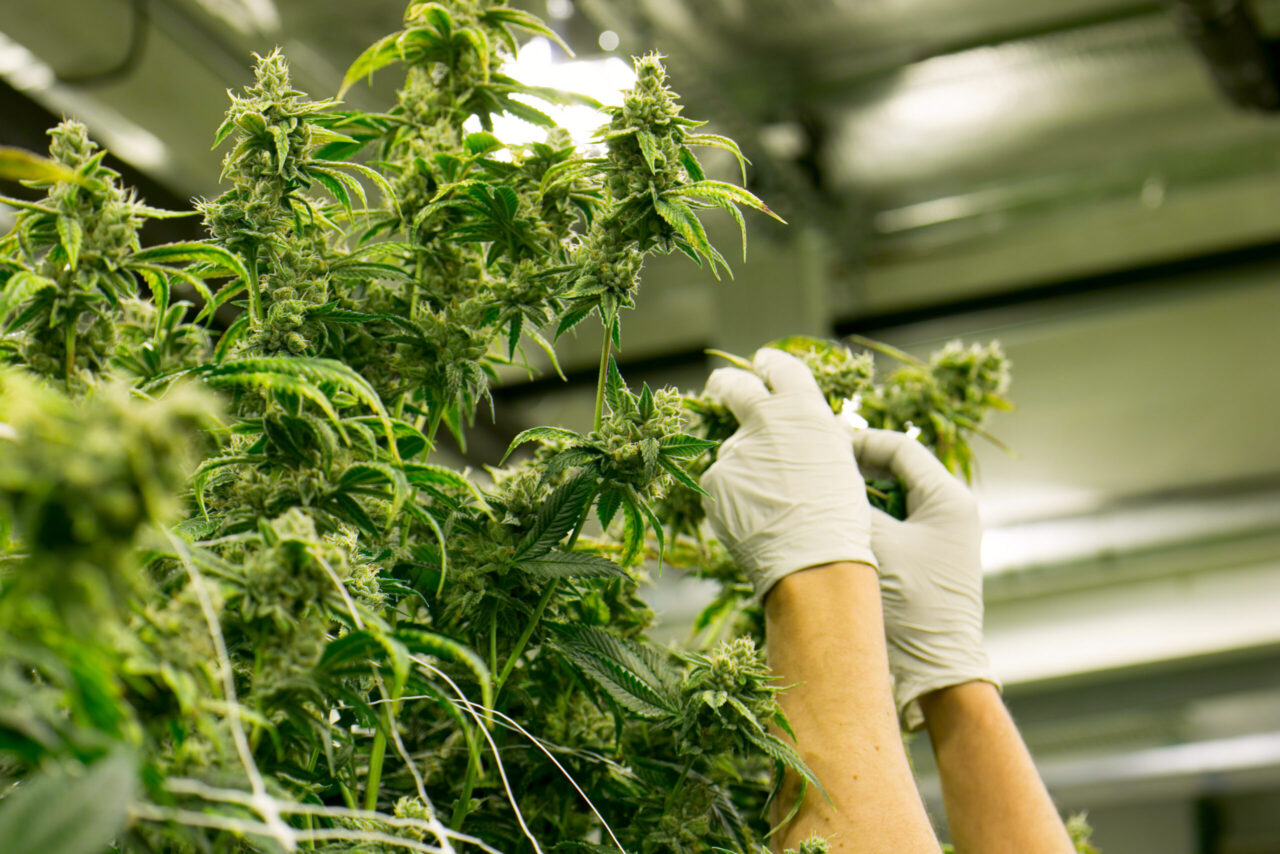
Key Takeaways:
- Start with the Basics: LST is an excellent starting point for beginners, offering increased yields with minimal risk to plant health.
- Advance Gradually: As you gain experience, progress to more complex techniques like SCROG, SOG, and supercropping.
- Tailor Your Approach: Every grow is unique. Adapt your training methods based on your space, strain, and goals.
- Combine Techniques: Often, the best results come from combining various training methods, such as using LST alongside topping or fimming.
- Patience is Key: Allow your plants time to recover and respond to training. Rushing can lead to stress and reduced yields.
- Stay Informed: Cannabis cultivation is an evolving field. Keep learning and experimenting with new techniques.
Remember:
- Always prioritize plant health over aggressive training
- Different strains respond differently to training – observe and adjust
- Proper nutrition and environmental control are crucial for successful training
Whether you’re aiming for sea of green yield maximization, creating a perfectly even SCROG canopy, or experimenting with advanced HST techniques like manifolding, the key is practice and careful observation.
By mastering these training techniques, you’re not just growing cannabis – you’re cultivating an art form. Each plant becomes a canvas, and you, the grower, are the artist shaping its growth for optimal beauty and yield.
Thank you for joining us on this journey through the world of cannabis plant training. Here’s to your future harvests – may they be bountiful, potent, and a testament to your growing skills! Remember, at Titan Seed Bank, we’re always here to support your growing journey. Happy growing, and may your canopy always be lush and your buds always be dense!
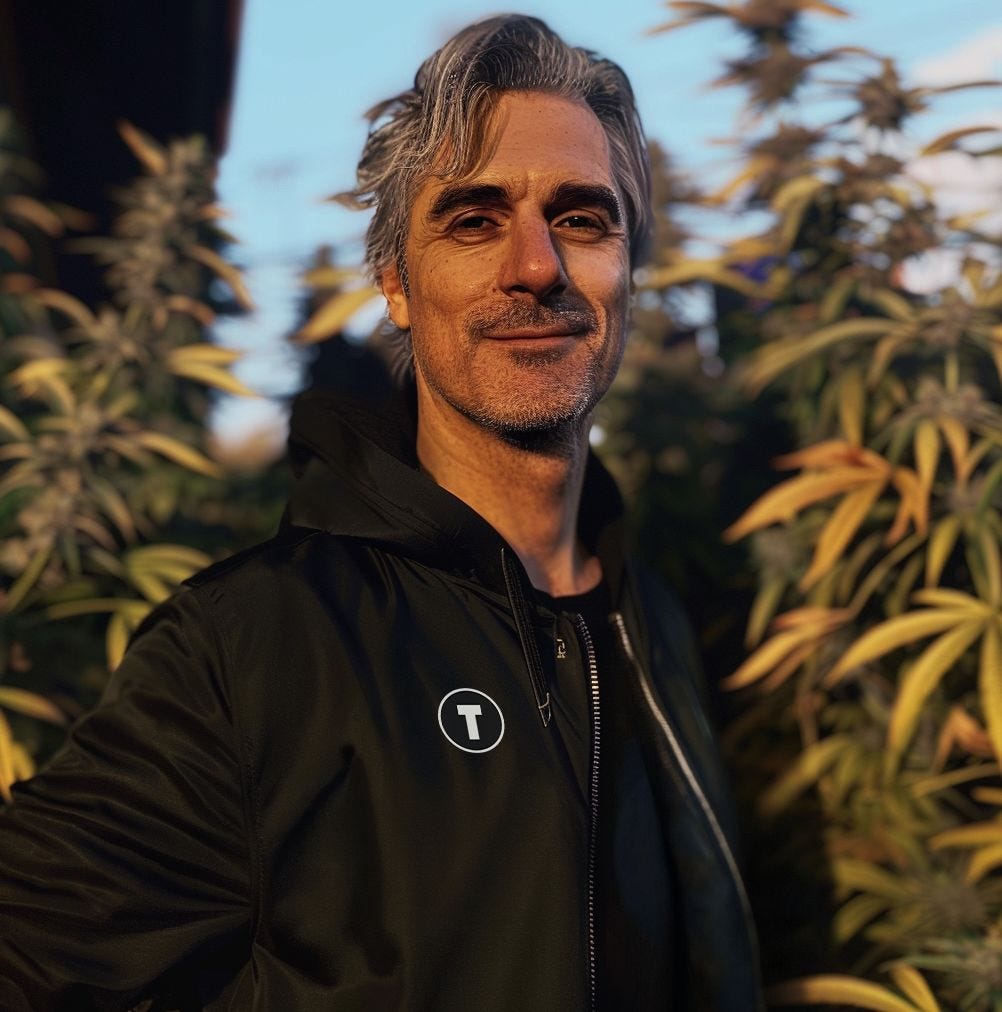
Mike Titan, the founder of Titan Seeds, is a seasoned cannabis cultivator and the mastermind behind the comprehensive grow guide available on the Titan Seeds website.



